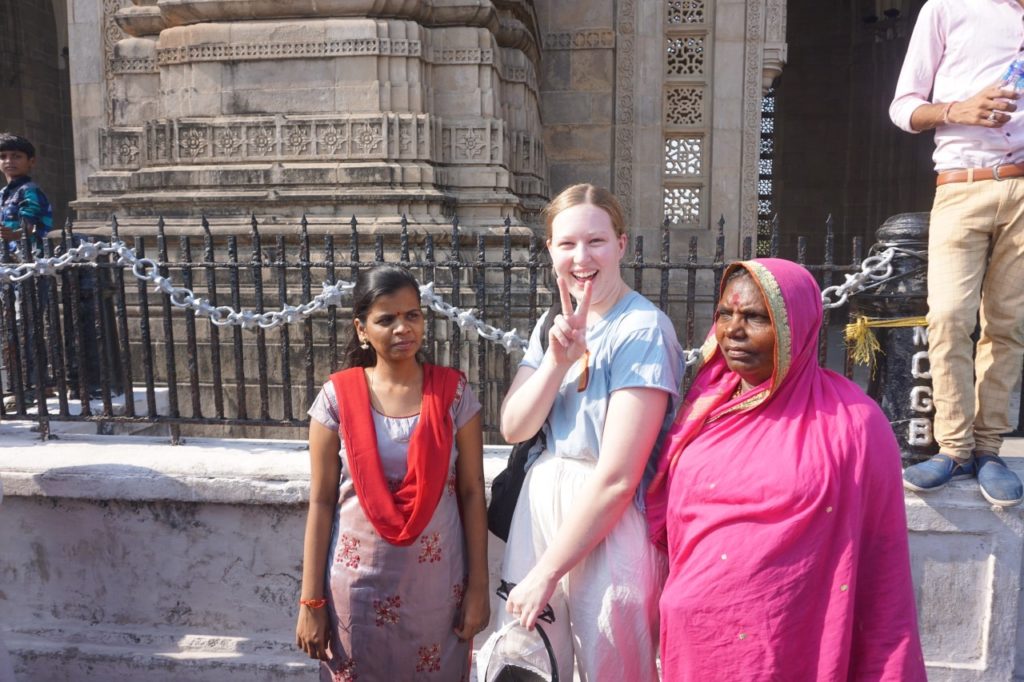By Laura Marsh-Clutton
Bachelor of Arts (Political Economy and Asian Studies)
On our first day in Mumbai we were thrown into the thick of it by experiencing Mumbai’s biggest landmark, the Gateway of India, on Republic Day. It is safe to say the crowds were in their thousands. However, The Gateway to India was not the only interesting thing I got to experience that day. Whereas I took photos of landmarks and buildings, many locals took photos of me and my group. Before departing for India my parents joked about how many people will want to take photos with me due to my light skin and blonde hair. At the time I laughed, thinking they were over reacting, but they were right. It was certainly a strange experience. I felt a bit like a celebrity and was more than happy to take a selfie with all the people who asked – there was many! I really enjoyed talking to everyone and they seemed very happy to be sharing a conversation with me.

India’s population has not been built through immigration, like has been the case for Australia. In Australia, we are used to seeing people of many ethnicities and races on a daily basis, as is the melting pot of our country. However in India, racial and ethnic differences are typically signifiers of foreignness. Hence, for locals at the Gateway of India, a person of white skin and pale hair is easily understood as a foreigner, and this goes a way to explaining the level of interest in us. This is all more the case during holiday periods, when Indians will often travel domestically from small villages such as Panipat in Haryana, where foreigners are never seen, to big cities like New Delhi and Mumbai. Considering this was Republic Day, it makes sense as to why so many people asked for a selfie!
Throughout our brief walk around the Gateway of India I found that the more I said “yes” to photos the more I was asked. It seems that word spreads quickly and that curiosity runs deep within the Indian people as many were drawn to the small crowd that had started to form. A most interesting occurrence was a man who asked me for photos on three separate occasions as he followed me around the Gateway. The continual over-stepping of what in Australia would be regarded as personal space boundaries, however, showed me that Indian people are very hospitable and welcoming in an effort to be friendly. Furthermore, it seemed that not only were the Indian people fascinated by us but having a photo with/of us was also a source of pride that was undoubtedly shared with their friends. Overall, this experience highlighted how in multicultural Australia, with its history of immigration, issues of race, ethnicity and foreignness are cast differently from that in India, representing a hand’s on first day experience of cultural learning.

